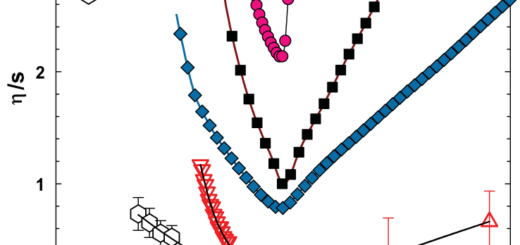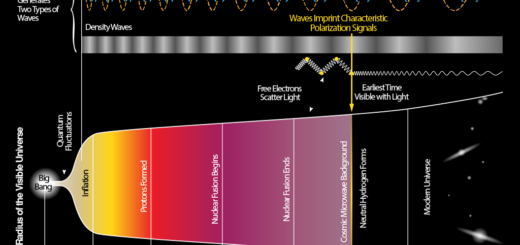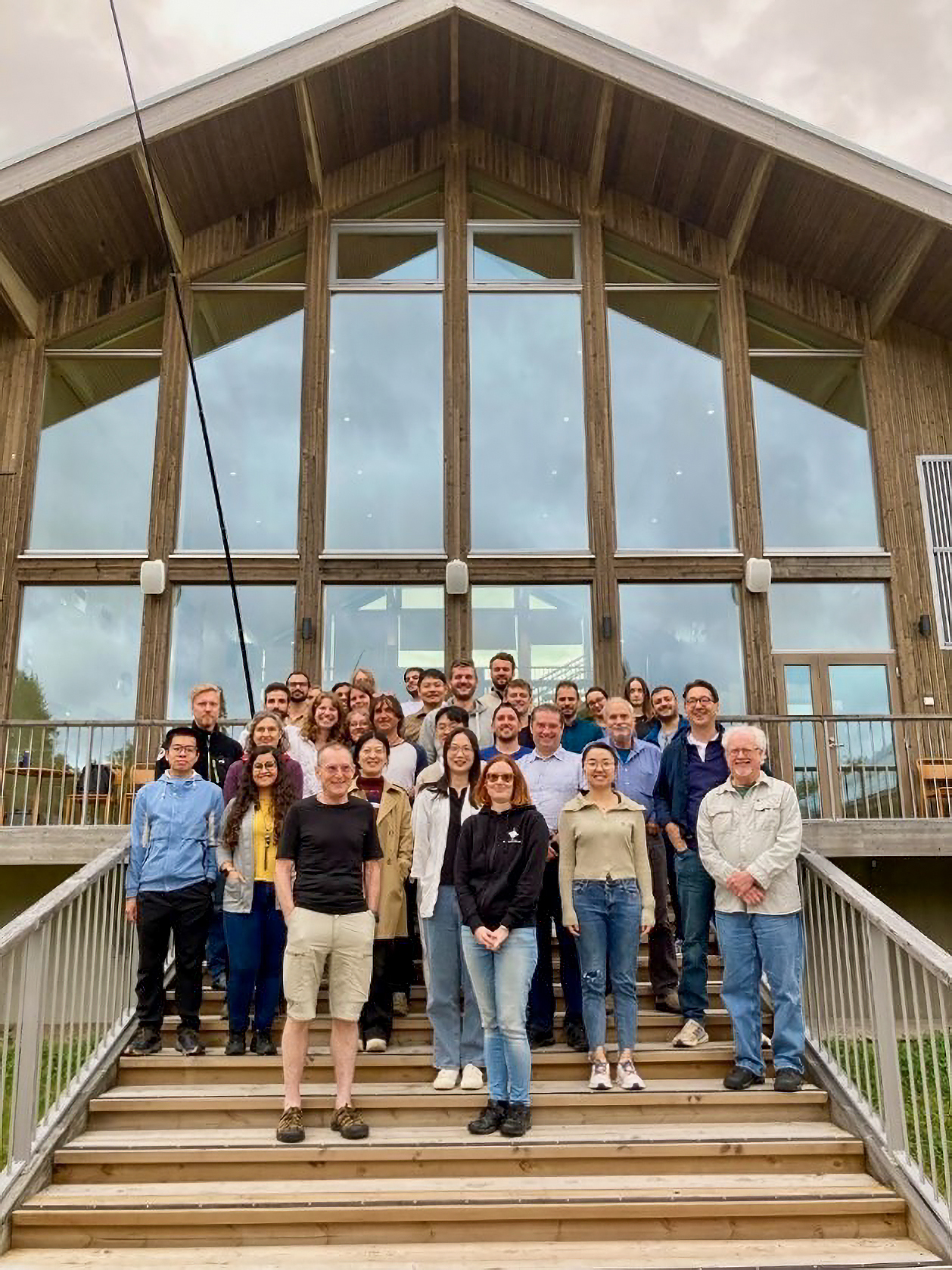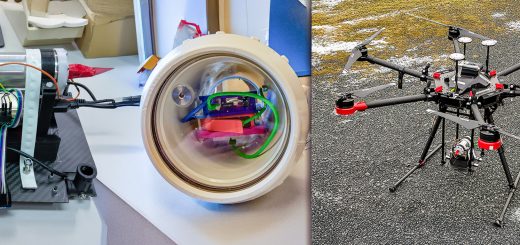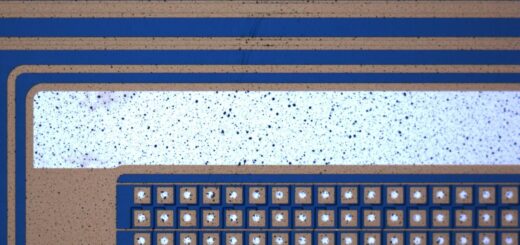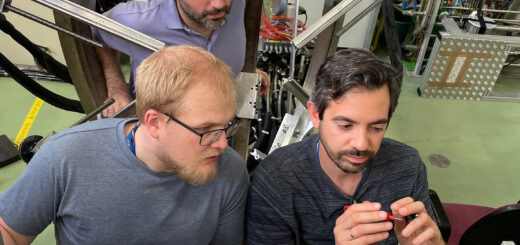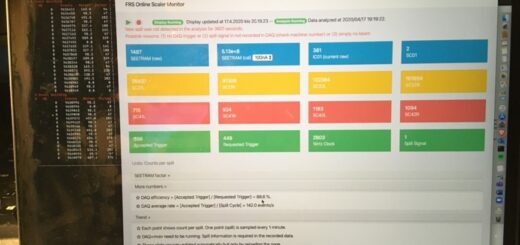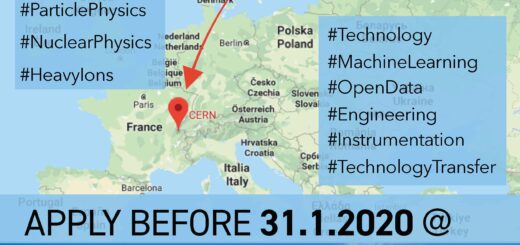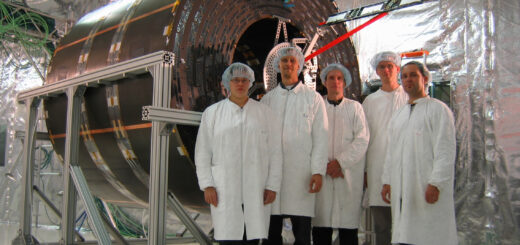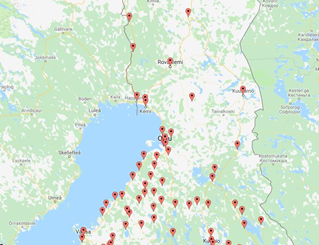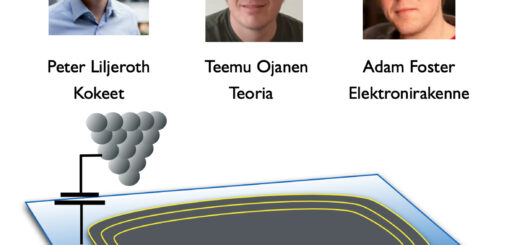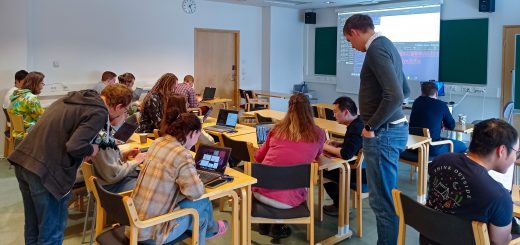COSINUS – Getting ready to search for dark matter

There is also a Finnish version available (machine translated, ChatGPT).
In an earlier blog post (in Finnish) I introduced the basics of dark matter and the direct detection experiments that are looking for signals of the dark matter particles scattering off ordinary atoms in the detectors. At the time of writing, HIP had just joined the COSINUS collaboration. The COSINUS experiment was still on a development stage, and the construction of the experimental facility in the Gran Sasso national laboratory (LNGS) was just getting started.
On April 18th the collaboration celebrated the official inauguration of the experiment, with attendance from the scientific and political establishments of the participating countries. The spokesperson Florian Reindl and the technical coordinator Karoline Schäffner, the two people behind the idea for the COSINUS experiment, gave an overview of the journey so far, and of the expectations for the coming years.
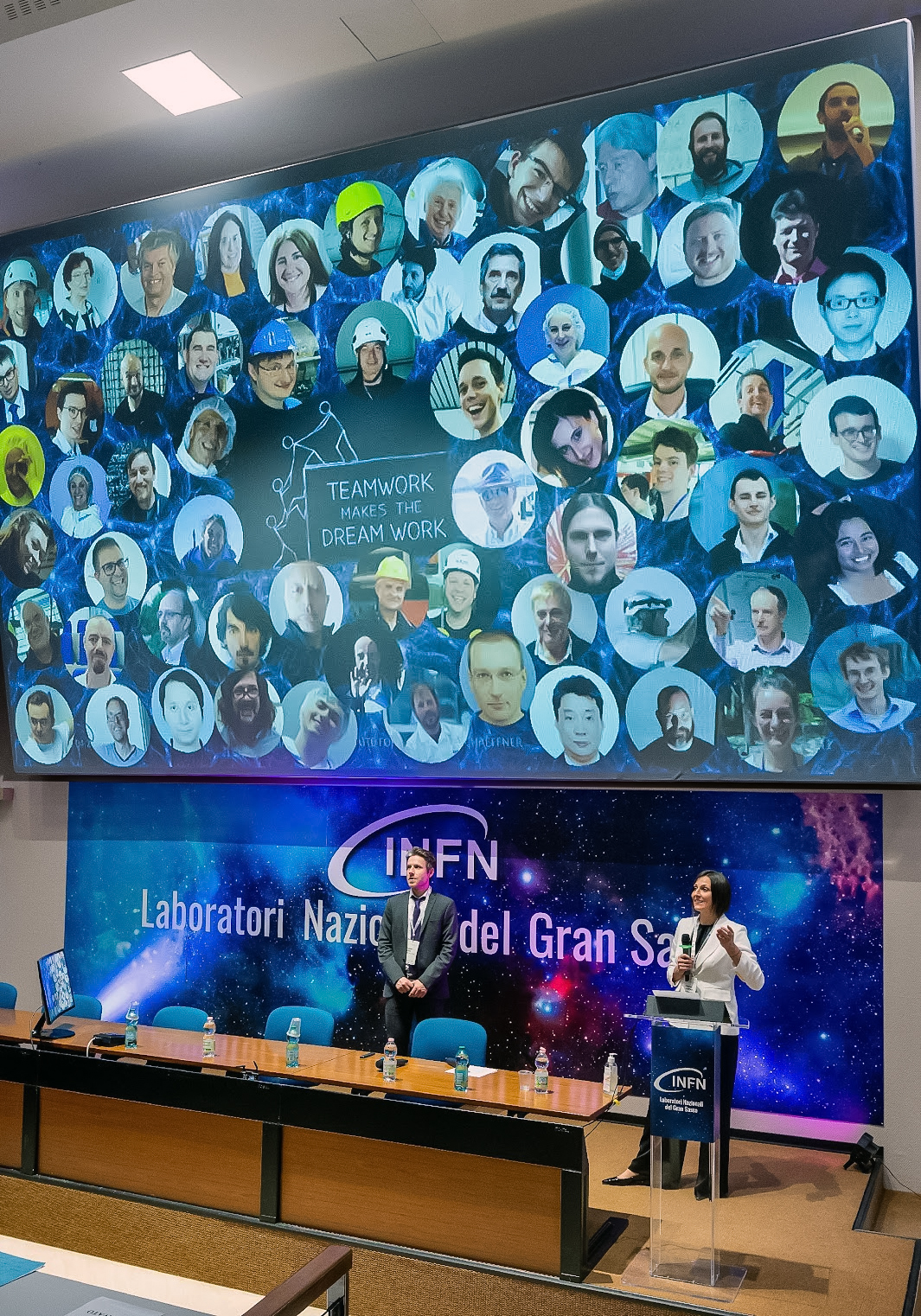
Detecting lattice vibrations – RemoTES
As discussed in the earlier blog entry, the main novelty of the COSINUS experiment compared to other NaI detectors is the calorimetric operation of the detector. In addition to measuring the scintillation light from the NaI crystal, which is similar to e.g. DAMA, COSINUS will also measure the kinetic energy deposited to the atoms in the crystal in a scattering event. This is achieved via a transition edge sensor (TES), which absorbs the atomic lattice vibrations, i.e. phonons, created in a scattering event. TES is a superconducting film kept at the transition temperature between the superconducting and normal conducting phases. By absorbing the energy carried by the phonons the TES heats up and its resistance increases. This increase in the resistance can in turn be read out with a sensitive magnetometer, called SQUID (superconducting quantum interference device).
This technology of operating scintillating crystals as calorimeters equipped with TESs has been successfully utilized e.g. in the CRESST experiment with various target materials, but the NaI crystal planned for use in COSINUS turns out to offer additional complications for this purpose. NaI is hygroscopic, meaning that it absorbs any ambient humidity, and easily degrades in normal atmospheric conditions. This implies that the standard methods of lithography utilized in the fabrication of the TES instruments can not be readily applied on the NaI crystal. The initial plan for the COSINUS experiment was to use a carrier crystal in between the NaI target and the TES, but this turned out to introduce complications for the phonon propagation to the TES, resulting in difficulties for reading the phonon signal. To overcome this issue a new instrumentation method was developed, named remoTES, where the TES is connected to the NaI target via a thin gold wire and a gold pad. This design has now been successfully operated on COSINUS prototype detectors.
HIP activities in COSINUS
Currently the HIP team in COSINUS is three people: PhD student Alex Stendahl, University researcher Matti Heikinheimo and Professor Katri Huitu. Also the HIP detector lab is involved in the experiment. Staff Scientist Matti Kalliokoski and Laboratory technician Raimo Turpeinen have designed a magnetic shielding system, which is required for stable operating conditions of the sensitive TES’s. The system will be installed in the coming months. Alex Stendahl has analyzed data from neutron calibration measurements performed on NaI crystals at the TUNL laboratory in United States. The purpose of these measurements is to determine the quenching factor of the crystals, and how this factor depends e.g. on the concentration of the Thallium dopant in the crystals. The quenching factor is defined as the ratio of the light yield of the scintillator due to a nuclear recoil event and the corresponding light yield due to an electron recoil event of equal recoil energy. The calibration of the recoil energy scale in scintillators is usually performed with electron recoil sources, while the dark matter signal COSINUS is searching for is produced by nuclear recoils. Therefore the quenching factor is needed to convert the energy scale into nuclear recoil energies, and uncertainties in the quenching factors translate into uncertainties in the recoil energy scale, which in turn affects the interpretation of the signal spectrum in terms of the dark matter particle mass. COSINUS can measure the recoil energy directly via the phonon channel at cryogenic temperature. This, however, is not the case for other NaI experiments, which operate at room temperature. The knowledge of the quenching factors is an essential input for comparing the results of different experiments, and the COSINUS analysis will provide valuable information for this purpose.
Matti Heikinheimo and Alex Stendahl are also preparing a model-independent method to facilitate the comparison of the coming COSINUS data to the DAMA annual modulation signal. The goal of this work is to provide an assessment of the compatibility of the two data sets under minimal assumptions about e.g. the quenching factors, dark matter model or dark matter distribution in the galaxy. It is well known that the DAMA signal is incompatible with the results of e.g. XENON and L-Z experiments under the standard assumptions of spin-independent dark matter nucleon scattering and dark matter halo model, but due to the different target materials in these experiments it is difficult to perform a completely model independent comparison. Our goal is to avoid these caveats via the reasonable assumption that the dark matter particles will have equal scattering rates per unit mass in the NaI crystals of both DAMA and COSINUS.
COSINUS will begin taking science data early next year. Within one year from that first physics results can be expected, and the model-independent comparison to DAMA will be possible with approximately three years of data taking.

Matti Heikinheimo
University Researcher, HIP Project (HEP BSM)
University of Helsinki and Helsinki Institute of Physics



